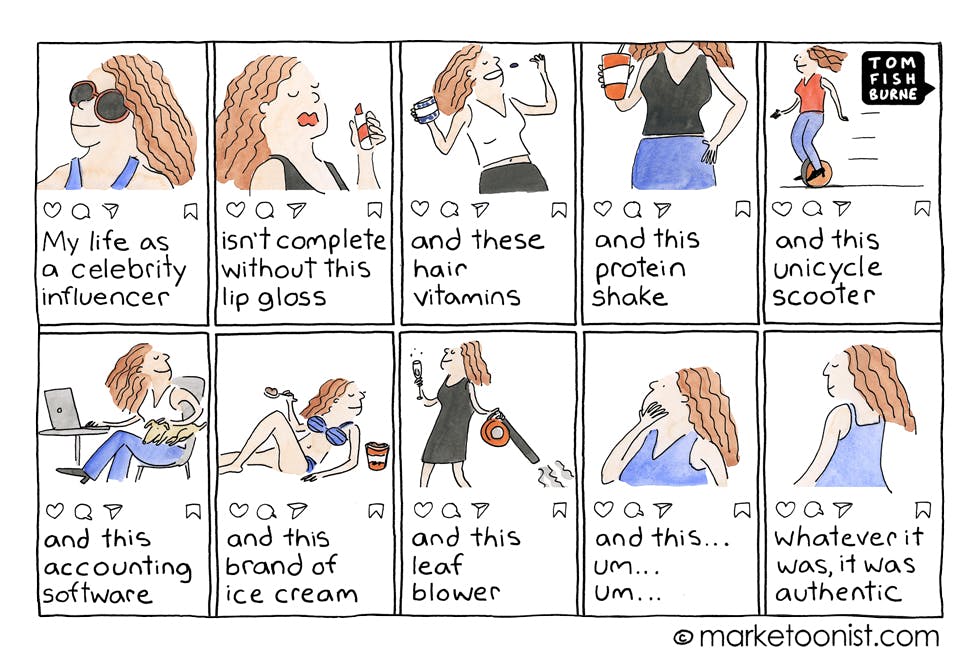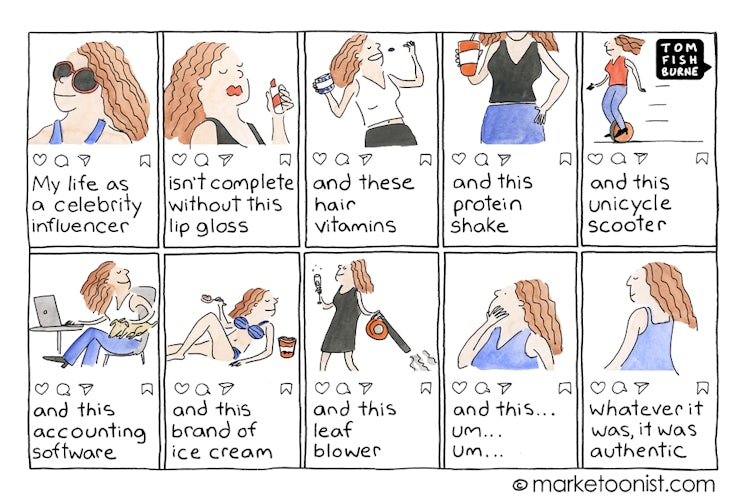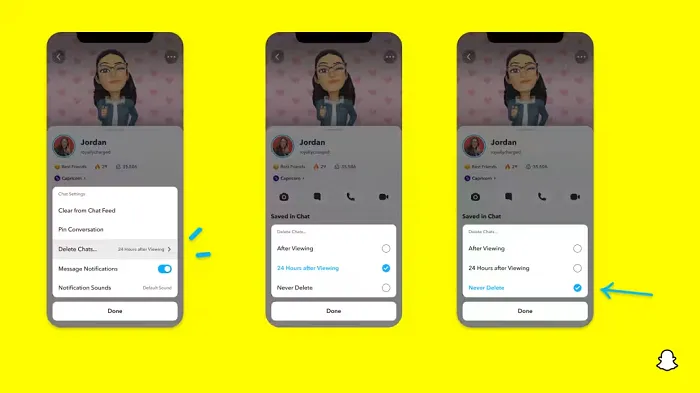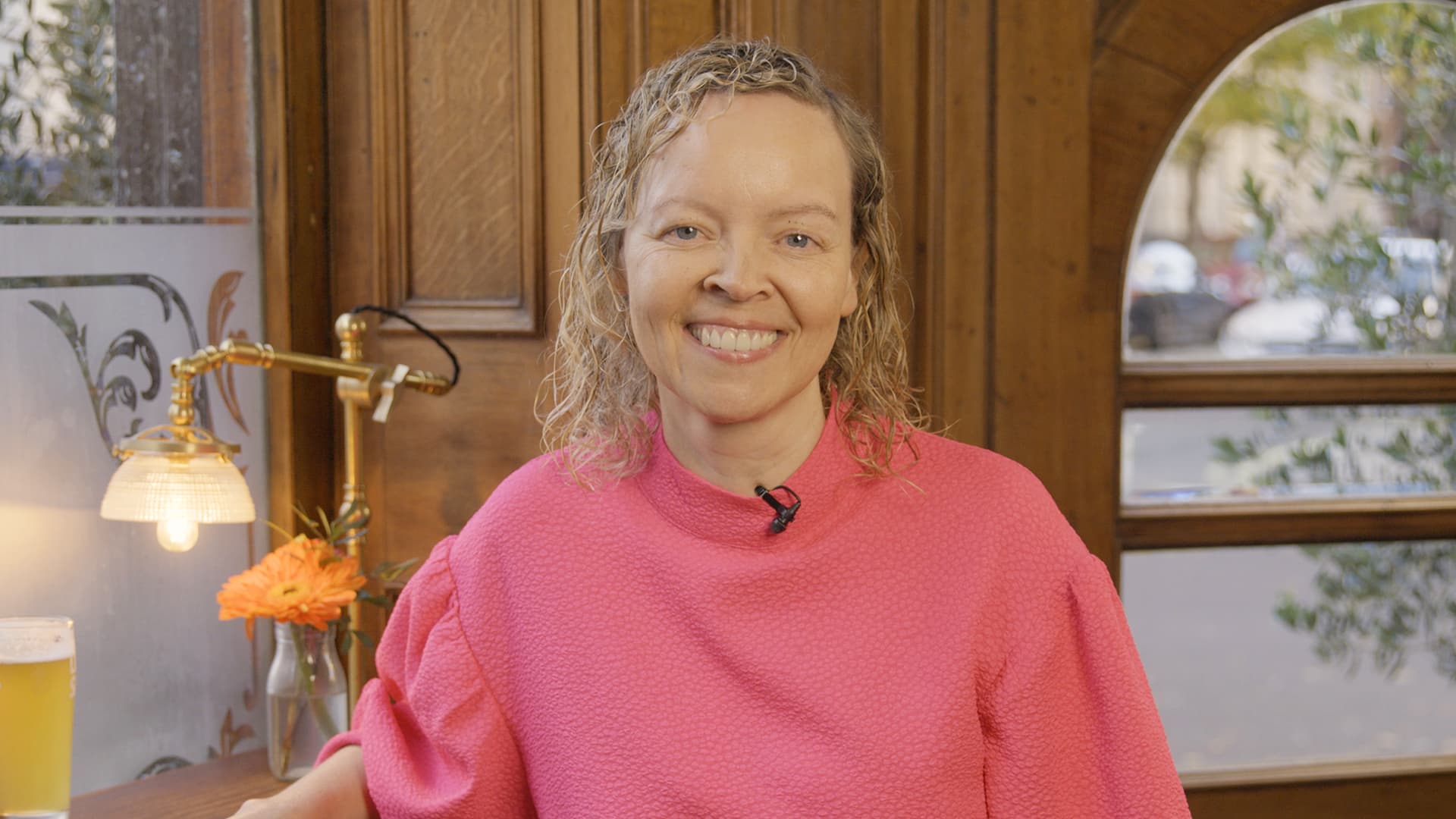SOCIAL
Influencer Fatigue: Are We Done with Influencers?

For major brands, partnerships with celebrity influencers have become an indispensable part of their marketing strategy, and as a result, thousands of influencers have come forward to cash in on their visibility.
Recently, however, we’re seeing signs that influencers can’t influence anymore, that the world may be done with traditional, top-down influencer marketing. In fact, new studies have found that only around 3% of consumers are influenced by celebrity influencers to purchase specific products.
So, what’s driving this change? Why are so many people switching off on influencers?
At the heart of this pattern is a huge shift in the way consumers interact with brands. Now, the age of the passive audience is over, and instead, customers are actively engaging with each other (and brands), looking for authentic and meaningful engagement, and forming their own communities based on shared interests and values – or what we like to call ‘tribes’.
In this post, we’ll take a look at the reasons why the golden age of influencer marketing, in a traditional sense, may be over, while we’ll also outline some alternative ways in which brands can engage with their audiences.
But to kick things off, let’s first dig a little deeper into what’s driving people away from traditional influencer recommendations.
Why are people getting tired of influencers?
Platforms like Instagram, Twitter, and Facebook all offer a tantalizing promise for users of all ages around the world – a welcoming place for self-expression, meaningful engagement, and a sense of community.
But increasingly, social media has become a dumping ground for sponsored posts and advertising, and social media users are quick to call influencers and brands out when they sense a lack of authenticity.

Here are a few reasons we’ve identified:
1. A greater demand for authentic engagement – driven by millennials and Gen Z
Of all the reasons for the move away from influencers, the growing demand for authentic and meaningful engagement is the most significant.
People are sick of all the generic, cookie-cutter posts showing celebrities posing with teeth-whitening kits, boutique clothing, or even appetite-suppressing lollipops.
%3F.png)
Instead, social media users are looking for real, unstaged content to engage with. This is particularly the case for younger users, with millennials and Gen Zers demanding real, authentic content from brands and influencers.
2. Fake influencers with fake followers, engagement, and likes
Then, there’s the problem of fake influencers with purchased engagement on platforms like Instagram and Twitter. Influencers now have major financial incentive to boost their numbers, and this has given rise to issues with bots, paid followers, and other shortcuts.
In fact, there have been several cases where influencers engaged by major brands have been found to have follower bases which are estimated to be up to 70% fake.
This isn’t just a massive headache for brands: it’s also another huge reason behind the rising disillusionment with influencers in general.
3. Cliché and repetitive influencer content
On top of the demand for more authentic engagement, user fatigue with stereotypical influencer content is also driving people away.
Every day, social media users are subjected to an unending stream of influencers peddling their wares with the same aesthetic. If it isn’t someone selling a yoga mat with a sunrise beach yoga pose, it’s someone with a tastefully-framed shot of avocado toast, or a too-perfect gym selfie.

If you’ve found yourself feeling a little fed up with cliches like this, don’t worry – you’re not alone. 47% of consumers report feeling fatigued by repetitive influencer content.
In fact, this collective frustration has led to some amazing parody accounts (like Insta Repeat) pointing out just how samey a lot of Instagram content can be.
This is a major reason behind Instagram users abandoning the platform’s classic aesthetic and looking for something more real.
In its place, a new generation of influencers has emerged – young content creators who are willing to engage their audience in unique ways, even if it means being a little dorky. And man, do people love it.
4. Too much reliance on the big players
Another trend driving people away from online influencers is an over-reliance on the big names out there. After all, Kim Kardashian can’t sell everything.
When it comes to mega-celebrities, there’s only so much paid sponsorship an individual can take on before their audience gets tired of it. For major brands, this means there’s a limit on what can be achieved through partnering with well-known faces.
As blogger and all-round media wizard Seth Godin notes, one way to get around this is to take the opposite approach – instead of finding the largest audience out there, brands should look for ways to build meaningful communities around smaller audiences.
“Instead of trying to reach everyone,” says Seth, “we should seek to reach the smallest viable audience and delight them so thoughtfully and fully that they tell others.”
5. Appropriating social causes for commercial gain
Finally, there’s the worrying trend of influencers or brands feigning dedication to important causes around the world, just to get a moment in the spotlight.
Whether it’s slacktivism campaigns like the Kony 2012 movement or greenwashing like DuPont and Exxon Mobil’s environmental initiatives, plenty of influencers, brands, and organizations are willing to appropriate meaningful causes in the interests of building their online audiences.
Examples like these contribute to mistrust in social media more broadly, and give people an even bigger reason to be cynical about efforts to spread awareness concerning important global issues.
So, if the world is fed up with traditional influencer marketing, what does this mean for brands on social? How should you engage with your audience, and get your products in front of the right customers?
Here are our suggestions.
Re-engineer your influencer marketing strategy
I might have painted a bleak picture for influencer marketing, but that doesn’t mean that there’s no place for influencers. Instead, brands simply need to adjust.
By dropping the focus on generic, big-name influencers with huge audiences, and by focusing instead on meaningful communities united around common passions and interests, brands can increase the visibility and relevance of their products.
We’re talking about consumer tribes.
Take the time to understand your tribes
Tribes are groups of consumers which share common traits.
These individuals identify with each other through their collective interests, which could be anything from gaming or eSports, veganism, sustainable fashion, or even a love for chunky dad shoes.
The internet is filled with groups of people who are subconsciously forming tribes around nearly every interest that you can think of.
Winning brands are those which understand how these tribes are created, what defines them and how they evolve over time. This includes analyzing their language, their choice of platform/s, and their preferred methods of communication – and then matching their content approaches, so that you can position your brand as a genuine tribe leader.
This means rethinking what the term ‘influencers’ mean.
Rethink what you mean by ‘influencers’
Examples such as cosmetics brand Glossier illustrate another great strategy to cope with the shift away from celebrity influencers online – rethink what you mean by ‘influencers’.
By finding individuals with meaningful connections to other members of the tribe to promote your brand, you can build brand visibility and credibility.
%3F-2.png)
In fact, analysis shows that individuals working on a more contained scale are often perceived as having a more legitimate voice than big-name celebrities, which can lead to a higher rate of conversion to sales.
So, when you’re thinking of your next influencer campaign, don’t automatically jump to the biggest names out there. Instead, take a look at individuals with an authentic, well-established presence on their platform of choice, and above all, a good connection to their tribe.
Think small
This also means that bigger isn’t necessarily better – you don’t have to shoot for the biggest follower numbers with your influencer campaigns.
Given the rising questions around celebrity influencers, you may well be better off partnering with influencers working on a smaller, more meaningful scale, with dedicated, passionate followings.
If you can engage your tribe of brand customers and fans through respected and trusted individuals, you can reach new potential fans – and build real brand loyalty.
Get the help you need to identify your tribes
Partnering with influencers used to be simple – all brands had to do was to pull together a shortlist of celebrities and public figures with sizeable audiences, compare the reach and profile of each individual, then make a choice.
Now, consumers don’t want to see the same influencer telling them which slimming teas to drink, which lipsticks to buy, and holiday resort they should go to. With the tribe mindset, everybody has the potential to be an influencer (in their tribe), which makes the influencer pool much bigger.
You need to take into account the influencer’s relevance, authenticity on the topic, analyze their content footprint, check if they have fake followers and/or engagement, out of hundreds and thousands of influencers on multiple platforms.
This analysis is impossible to do manually. You need to put big data and AI to work by identifying dedicated fans within millions of profiles. Then, you need to combine this analysis with human expertise to understand their values and match them with your brand. That way, you’ll be ready to find the right influencer.
Ditch the big names, and go for authenticity
There’s good reason why so many Instagram users are turning away from generic, big-name influencers on social media. The jig is up, and people are starting to see through the facade of samey, calculated promotional content.
In an environment where authenticity is the greatest online currency, brands need to know everything they can about their audience, and understand how to find and engage their tribes of fans online.
SOCIAL
Snapchat Explores New Messaging Retention Feature: A Game-Changer or Risky Move?

In a recent announcement, Snapchat revealed a groundbreaking update that challenges its traditional design ethos. The platform is experimenting with an option that allows users to defy the 24-hour auto-delete rule, a feature synonymous with Snapchat’s ephemeral messaging model.
The proposed change aims to introduce a “Never delete” option in messaging retention settings, aligning Snapchat more closely with conventional messaging apps. While this move may blur Snapchat’s distinctive selling point, Snap appears convinced of its necessity.
According to Snap, the decision stems from user feedback and a commitment to innovation based on user needs. The company aims to provide greater flexibility and control over conversations, catering to the preferences of its community.
Currently undergoing trials in select markets, the new feature empowers users to adjust retention settings on a conversation-by-conversation basis. Flexibility remains paramount, with participants able to modify settings within chats and receive in-chat notifications to ensure transparency.
Snapchat underscores that the default auto-delete feature will persist, reinforcing its design philosophy centered on ephemerality. However, with the app gaining traction as a primary messaging platform, the option offers users a means to preserve longer chat histories.
The update marks a pivotal moment for Snapchat, renowned for its disappearing message premise, especially popular among younger demographics. Retaining this focus has been pivotal to Snapchat’s identity, but the shift suggests a broader strategy aimed at diversifying its user base.
This strategy may appeal particularly to older demographics, potentially extending Snapchat’s relevance as users age. By emulating features of conventional messaging platforms, Snapchat seeks to enhance its appeal and broaden its reach.
Yet, the introduction of message retention poses questions about Snapchat’s uniqueness. While addressing user demands, the risk of diluting Snapchat’s distinctiveness looms large.
As Snapchat ventures into uncharted territory, the outcome of this experiment remains uncertain. Will message retention propel Snapchat to new heights, or will it compromise the platform’s uniqueness?
Only time will tell.
SOCIAL
Catering to specific audience boosts your business, says accountant turned coach

While it is tempting to try to appeal to a broad audience, the founder of alcohol-free coaching service Just the Tonic, Sandra Parker, believes the best thing you can do for your business is focus on your niche. Here’s how she did just that.
When running a business, reaching out to as many clients as possible can be tempting. But it also risks making your marketing “too generic,” warns Sandra Parker, the founder of Just The Tonic Coaching.
“From the very start of my business, I knew exactly who I could help and who I couldn’t,” Parker told My Biggest Lessons.
Parker struggled with alcohol dependence as a young professional. Today, her business targets high-achieving individuals who face challenges similar to those she had early in her career.
“I understand their frustrations, I understand their fears, and I understand their coping mechanisms and the stories they’re telling themselves,” Parker said. “Because of that, I’m able to market very effectively, to speak in a language that they understand, and am able to reach them.”Â
“I believe that it’s really important that you know exactly who your customer or your client is, and you target them, and you resist the temptation to make your marketing too generic to try and reach everyone,” she explained.
“If you speak specifically to your target clients, you will reach them, and I believe that’s the way that you’re going to be more successful.
Watch the video for more of Sandra Parker’s biggest lessons.
SOCIAL
Instagram Tests Live-Stream Games to Enhance Engagement

Instagram’s testing out some new options to help spice up your live-streams in the app, with some live broadcasters now able to select a game that they can play with viewers in-stream.
As you can see in these example screens, posted by Ahmed Ghanem, some creators now have the option to play either “This or That”, a question and answer prompt that you can share with your viewers, or “Trivia”, to generate more engagement within your IG live-streams.
That could be a simple way to spark more conversation and interaction, which could then lead into further engagement opportunities from your live audience.
Meta’s been exploring more ways to make live-streaming a bigger consideration for IG creators, with a view to live-streams potentially catching on with more users.
That includes the gradual expansion of its “Stars” live-stream donation program, giving more creators in more regions a means to accept donations from live-stream viewers, while back in December, Instagram also added some new options to make it easier to go live using third-party tools via desktop PCs.
Live streaming has been a major shift in China, where shopping live-streams, in particular, have led to massive opportunities for streaming platforms. They haven’t caught on in the same way in Western regions, but as TikTok and YouTube look to push live-stream adoption, there is still a chance that they will become a much bigger element in future.
Which is why IG is also trying to stay in touch, and add more ways for its creators to engage via streams. Live-stream games is another element within this, which could make this a better community-building, and potentially sales-driving option.
We’ve asked Instagram for more information on this test, and we’ll update this post if/when we hear back.
-

 PPC7 days ago
PPC7 days ago19 Best SEO Tools in 2024 (For Every Use Case)
-
SEARCHENGINES6 days ago
Daily Search Forum Recap: April 19, 2024
-
SEARCHENGINES7 days ago
Daily Search Forum Recap: April 18, 2024
-

 WORDPRESS6 days ago
WORDPRESS6 days agoHow to Make $5000 of Passive Income Every Month in WordPress
-

 SEO7 days ago
SEO7 days ago25 WordPress Alternatives Best For SEO
-

 WORDPRESS5 days ago
WORDPRESS5 days ago13 Best HubSpot Alternatives for 2024 (Free + Paid)
-

 WORDPRESS6 days ago
WORDPRESS6 days ago7 Best WooCommerce Points and Rewards Plugins (Free & Paid)
-

 MARKETING6 days ago
MARKETING6 days agoBattling for Attention in the 2024 Election Year Media Frenzy



